Tag: art
Stories in stone
9 November 2012 | This 'n' that
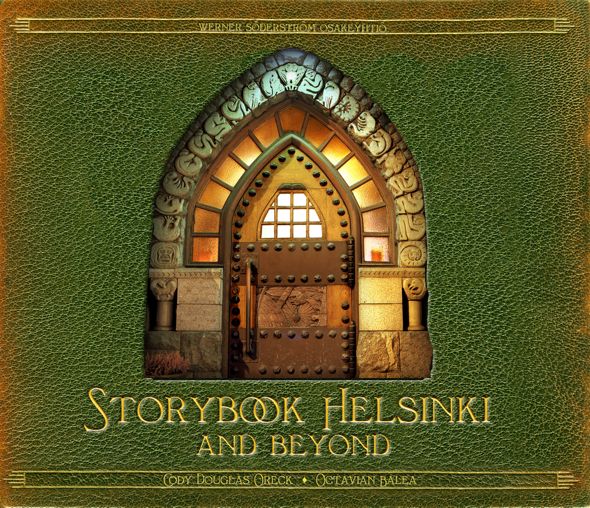 Birds and bees, frogs, squirrels, water lilies, thistles, ferns, junipers, bears and even gnomes originating in Finnish nature appear, in abundance, in Finnish architecture of the two decades around the turn of the 20th century.
Birds and bees, frogs, squirrels, water lilies, thistles, ferns, junipers, bears and even gnomes originating in Finnish nature appear, in abundance, in Finnish architecture of the two decades around the turn of the 20th century.
The trend that developed out of the Arts and Crafts Movement in Great Britain and in the United States, known as l’art nouveau in France and Jugendstil in Germany, lived a short but extremely fervent life in Finland, which adopted the term jugend.
In Finland this aesthetic movement is also called national romanticism. In 1899 the pan-Slavic movement arising in Russia took the form of attempts to suppress Finland’s burgeoning national identity in Finland, and in resisting this, artists made extensive use of national romantic material in their work. More…
Sex, violence and horror, anyone?
20 September 2012 | Letter from the Editors
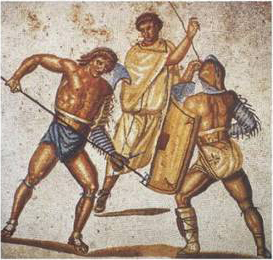
Gladiatorial entertainment: Mosaic from the Roman villa at Nennig (Germany), 2nd-3rd century AD. Picture: Wikipedia
In our last Letter, ‘Art for art’s sake’, we pondered how the efforts of making art (or design) profitable and exportable result, in public discourse, in the expectation that art (or design) should aid the development of business.
Not a lot is talked about how business can help art.
Art of course, is in essence ‘no use’, art doesn’t exist in order to increase the GDP (although nothing prevents it from doing so, of course).
The Finnish poet-author-translator Pentti Saarikoski (1937–1983) argued that art needs no apologies whatsoever: ‘What’s wrong with “Art for art’s sake”? – any more than bread for bread’s sake?
‘Art is art and bread is bread, and people need both if they are to have a balanced diet.’
Defining what is entertainment is and what is art is not always significant or necessary. The boundaries can be artificial, or superficial. But occasionally one wonders where the makers of ‘entertainment’ think it’s going. Entertainment for entertainment’s sake?
The Finnish Broadcasting Company (YLE) recently announced a new radio play series. It is, it said, a series that differs stylistically from traditional radio plays; it seeks a new and younger audience. The news item was headlined: ‘The new radio play drips with sex, violence and horror.’ In a television interview the director said that the radio dramaturge who had commissioned the series had described what the (new, younger) listeners should experience: ‘They should feel thrilled and horny all the time.’ More…
Outsider art protected
31 August 2012 | This 'n' that
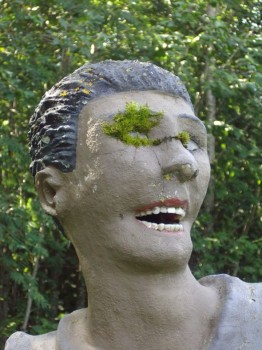
Moss lady: one of the 500 statues
Papermill worker Veijo Rönkkönen (1944–2010) lived all his life on a small, isolated farm in Parikkala, eastern Finland, close to the Russian border. In the 1960s he started sculpting statues in his free time which he placed in the garden around his house. The expanding statue park – take a look at the pictures! – was always open to visitors for free.
When the artist died, the Parikkala authorities were not willing to invest money in acquiring the garden and the park, a unique ‘total work of art’. Fortunately, it was bought by a businessman, Reino Uusitalo, founder of the Pyroll paper and cardboard company. An association now manages the park – and entry is still free. Rönkkönen’s outsider art continuously attracts nearly 30,000 visitors a year.
Over a period of fifty years, Rönkkönen created five hundred human and animal figures made of concrete. Living in his house in the middle of his garden, the artist avoided any contact with the thousands of people who came to wander in his extraordinary open-air gallery.
Now, thanks to Uusitalo’s generosity and the work of the association, the garden will keep growing – and the statues grow lichen and moss, ageing naturally.
![]()
Photographer and writer Veli Granö introduced the life and works of this self-made artist in his book Veijo Rönkkösen todellinen elämä / The real life of Veijo Rönkkönen (Maahenki, 2007): see Books from Finland‘s extract.
Erik Kruskopf: Alvar Aalto kuvataiteilijana [Alvar Aalto as visual artist]
14 June 2012 | Mini reviews, Reviews
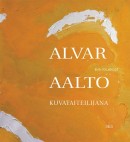 Alvar Aalto kuvataiteiljana
Alvar Aalto kuvataiteiljana
[Alvar Aalto as visual artist]
Suomentanut [Translated from Swedish by]: Leena Vallisaari
Helsinki: Finnish Literature Society, 2012. 215 p., ill.
ISBN 978-952-222-294-7
€ 45, hardback
Finland’s most famous architect Alvar Aalto (1898–1976) is also well-known as a designer, but his activity as a visual artist has remained less familiar. Aalto was interested in drawing and painting at a young age. He also received some training from professional artists, and before graduating as an architect he supported himself by producing vignettes, illustrations and cartoons. His best works are considered to date from the late 1910s and early 1920s, and were diverse in themes and technique. After the Second World War he painted exclusively abstract works in which the originality of his vision is most clearly expressed. He also produced sculpture, especially wood reliefs, which are related to his work as a designer. Aalto saw his visual art as being closely connected with his architecture, a branch of it. The book contains many reproductions of Aalto’s art and demonstrates his masterful, form-seeking creativity. Summaries in Swedish and English.
Translated by David McDuff
Art for art’s sake
8 June 2012 | Letter from the Editors
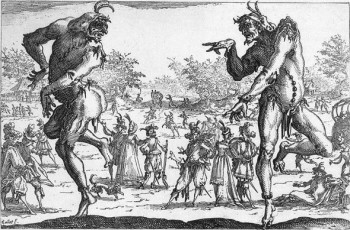
Art, entertainment for the elite? ‘The two pantaloons’ by Jacques Callot (1616). Etching, British Museum. Picture: Wikimedia
It is the necessity, or the obsession, of the present age to measure everything in monetary terms: to know as exactly as possible how much money something is capable of making for the owner of its ‘rights’.
This also applies to various fields of art: for example, a play is expected to make profit for its producers – today also in the case of ‘uncommercial’ institutions such as National Theatres. Seats must be sold; bringing in busloads of people is a must.
But the purpose of creating art is not to increase the GDP. Art is not useful, as theatre director and playwright Esa Leskinen argues in a recent essay (in Finnish only): ‘Art doesn’t aspire to anything. Art isn’t something that is consumed in order to gather the energy to go on working. The purpose of art is not to burnish the image of Finland or make people feel good. Art is radically other than the field of sense and utility in which our everyday world is located.
‘There is no sense in art. Art is no use.’
We agree. We also think that’s how it should be. More…
Panem et circenses, Part II
10 May 2012 | This 'n' that
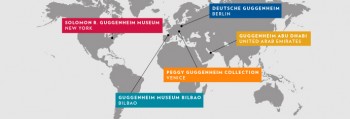
The Guggenheim Foundation's global network of museums
Helsinki has said no thanks to a new Guggenheim art museum in the city – for the time being, at least.
On 2 May the City Council voted 8-7 against the mayor’s motion to build such a gallery in Helsinki. Politically, the move was supported by the National Coalition Party and the Swedish People’s Party, while the Greens and the left-wing parties opposed it.
What happens after the upcoming national elections – in autumn this year – is another matter. The director of the Guggenheim Foundation, Richard Armstrong, is persistent: he says he wants Helsinki. Well, if the Foundation offers a better deal in the future, the proposal may be considered again.
Three months ago we wondered – see Panem et circenses – whether ‘the people of Helsinki wish to begin to pay additional taxes for the revival, yet again, of the age-old dream of guaranteeing Finland “a place on the world map”, in a situation where economic difficulties are a matter of everyday life for increasing numbers of them? (We believe, incidentally, that Finland already has an appropriate place on the world map.) Will their opinion be asked, or heard?’ More…
Panem et circenses?
2 February 2012 | This 'n' that
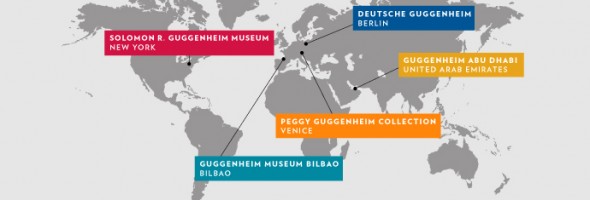
The Guggenheim Foundation's global network of museums
What does Helsinki need? Bread and circuses, yes, but at what cost the latter?
In January – after a study that cost the Finns a couple of million euros – the Salomon R. Guggenheim Foundation (est. 1937) indicated that it was favourably inclined toward the construction of a new art museum, bearing its name, in Helsinki. The leaders of Helsinki city council are aiming to make a positive decision as soon as possible.
The cost of the building, whose site adjoins the Presidential Palace in central Helsinki, is estimated at 130–140 million euros, with design costs of about 11 million euros. Unlike in the case of Berlin, no existing building is considered suitable; instead, an architectural dream must be realised, with plenty of wow-factor.
Its mere maintenance costs will be around 14.5 million euros a year. It has been estimated that the Helsinki Guggenheim’s income could be 7.7 million a year. In addition, a 20-year Guggenheim licence costs 24.6 million euros.
The project has provoked widely differing reactions. Proponents of the project believe that the Guggenheim brand would bring thousands of new visitors to Helsinki and that half a million people would visit it each year. Opponents doubt this, speak of a ‘Guggenburger’ franchising concept and of the fact that not even the existing art museums of Helsinki are particularly crowded.
The odd thing is, however, that the basic demographic differences between Helsinki and, say, Bilbao – where the Guggenheim museum has been a big success – are constantly ignored in the discussions: the population of Spain is almost 50 million and another 50 million visitors go there every year, while the corresponding figures for this most northerly part of Europe are five million inhabitants and visitors.
In Bilbao, moreover, there was no museum of contemporary art before the advent of the Guggenheim; Helsinki, on the other hand, opened Kiasma, a new museum of contemporary art (165,000 visitors in 2010) in 1998 and the neighbouring city of Espoo its Emma museum of modern art (82,000 visitors in 2010) in 2006.
Economic prospects on any level now offer little hope. The Finnish government, in the shape of the ministry of culture, has just cut grants to state-aided museums by three million euros – the Museum of Cultures in Helsinki, for example, is closing its doors, and some 40 of the museum staff elsewhere will be sacked. The government is not promising any money to the Guggenheim.
How, then, to fund an annual deficit of 7 million euros? Finland does not have a great supply of art-minded millionaire sponsors, and no one has so far made any concrete offers on how to fund this project.
The Guggenheim Foundation itself is not taking any financial risks with this project. Neither has it announced in any detail what sort of art will feature in the museum’s temporary exhibitions.
People who live in the city are more preoccupied with, for example, the shortcomings of the health services: there are waiting lists for everything, often of many weeks, and the old university children’s hospital has outgrown its present space. There are cuts and shrinkages yet to come in the spending structure of the country as a whole and of Helsinki – civil servants themselves estimate that the city’s budget is not sufficient to cover even the upkeep of basic services.
To judge by the public debate, the deep ranks of Helsinki taxpayers do not want a new monument, one for which it will be necessary to pay – in addition to maintenance – more than a million euros a year to an American brand for the mere use of its name, for more than 20 years.
Do the people of Helsinki wish to begin to pay additional taxes for the revival, yet again, of the age-old dream of guaranteeing Finland ‘a place on the world map’, in a situation where economic difficulties are a matter of everyday life for increasing numbers of them? (We believe, incidentally, that Finland already has an appropriate place on the world map.) Will their opinion be asked, or heard?
Helene Schjerfbeck. Och jag målar ändå [Helene Schjerfbeck. And I still paint]
16 December 2011 | Mini reviews, Reviews
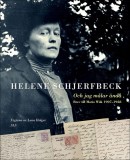 Helene Schjerfbeck. Och jag målar ändå. Brev till Maria Wiik 1907–1928
Helene Schjerfbeck. Och jag målar ändå. Brev till Maria Wiik 1907–1928
[Helene Schjerfbeck. And I still paint. Letters to Maria Wiik 1907–1928]
Utgivna av [Edited by]: Lena Holger
Helsingfors: Svenska Litteratursällskapet i Finland; Stockholm: Bokförlaget Atlantis, 2011. 301 p., ill.
ISBN (Finland) 978-951-583-233-7
ISBN (Sweden) 978-91-7353-524-3
€ 44, hardback
In Finnish:
Helene Schjerfbeck. Silti minä maalaan. Taiteilijan kirjeitä
[Helene Schjerfbeck. And I still paint. Letters from the artist]
Toimittanut [Edited by]: Lena Holger
Suomennos [Translated by]: Laura Jänisniemi
Helsinki: Suomalaisen Kirjallisuuden Seura, 2011. 300 p., ill.
ISBN 978-952-222-305-0
€ 44, hardback
This work contains a half of the collection of some 200 letters (owned by the Signe and Ane Gyllenberg’s foundation), until now unpublished, from artist Helene Schjerfbeck (1862–1946) to her artist friend Maria Wiik (1853–1928), dating from 1907 to 1928. They are selected and commented by the Swedish art historian Lena Holger. Schjerfbeck lived most of her life with her mother in two small towns, Hyvinge (in Finnish, Hyvinge) and Ekenäs (Tammisaari), from 1902 to 1938, mainly poor and often ill. In her youth Schjerfbeck was able to travel in Europe, but after moving to Hyvinge it took her 15 years to visit Helsinki again. In these letters she writes vividly about art and her painting, as well as about her isolated everyday life. Despite often very difficult circumstances, she never gave up her ambitions and high standards. Her brilliant, amazing, extensive series of self-portraits are today among the most sought-after north European paintings; she herself stayed mostly poor all her long life. The book is richly illustrated with Schjerfbeck’s paintings (mainly from the period), drawings and photographs.
Nature boy
15 September 2011 | In the news
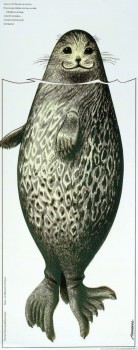
Seal signed: Saimaa ringed seal by Erik Bruun
The graphic artist Professor Erik Bruun has been awarded the Luonnotar / National Spirit of Nature Award for 2011.
The prize, established by the Puu kulttuurissa / Wood in Culture Association in 2001 and now worth € 12,000, is awarded bi-annually to Finnish professionals of any field of culture whose work has helped to make the public in Finland and abroad more aware of Finnish culture, heritage and environment.
Erik Bruun (born 1926) – who was the Art Editor of Books from Finland from 1976 to 1989 – is perhaps best known to the public for his numerous posters and advertisements, in particular his nature posters for the Finnish Association for Nature Conservation: the Saimaa ringed seal, the bear, eagles, owls, seagulls and other birds.
Bruun’s interest in nature photography, drawing, etching and lithography have long combined in his work for the Finnish wood processing industry as well as in his illustrative work for magazines and books and in designing postage stamps and banknotes.
A book on his life’s work, Sulka ja kynä. Erik Bruunin julisteita ja käyttögrafiikkaa (‘The quill and the pen. Posters and graphics by Erik Bruun’) by Ulla Aartomaa was published in 2007 (and reviewed in Books from Finland 3/2007). Take a look at his work on his home page.
Tchotchkes for the tsar
11 August 2011 | Reviews
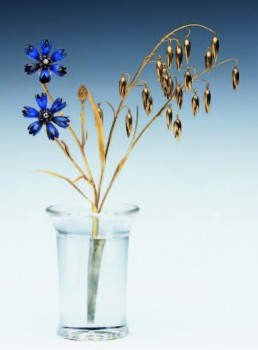
Cornflower and ear of oats: one of the several Fabergé gemstone ornaments now owned by Queen Elizabeth of England (gold, rock crystal, diamonds, enamel, ca 18 cm)
Ulla Tillander-Godenhielm
Fabergén suomalaiset mestarit
[Fabergé’s Finnish masters]
Design: Jukka Aalto/Armadillo Graphics
Helsinki: Tammi, 2011. 271 p., ill.
ISBN 978-951-31-5878-1
€57, hardback
In its online shop, the Hermitage Museum in St Petersburg sells a copy of a most delicate, enchanting little nephrite-and-opal lily of the valley that perfectly imitates nature, sitting in a vase made of rock crystal that looks like a glass of water.
These small flowers made of gold and gemstones were manufactured by the jeweller Fabergé a hundred years ago. The lily of the valley was the most frequently used floral motif in the Fabergé workshops – it was the favourite flower of Empress Alexandra (1872–1918), and the imperial family was the the foremost client of the world’s foremost jeweller.
The replica (13.5 centimetres high) is available at the Hermitage as a ‘luxury gift’ for the price of mere $3,300. (N.B. Since we published this review, the ‘luxury gift’ items seem to have disappeared from the Hermitage online shop selection, so we have removed the link. Several Fabergé egg replicas are available though, ranging in price from $200 upwards – link below.)
For those who feel the price is excessive, there is also a rather modestly-priced little bay tree (original: gold, Siberian nephrite, diamonds, amethysts, pearls, citrines, agates and rubies as well as natural feathers, about 30 centimetres tall, featuring a little bird that emerges flapping its wings and singing when a small key is turned) at just $ 219,95. Despite its form, it is classified as one of the famous imperial Easter eggs. (However, as I write, this item is unfortunately sold out…) More…
Päivi Jantunen: Kaj & Franck. Esineitä ja lähikuvia / Designs & Impressions
6 July 2011 | Mini reviews, Reviews
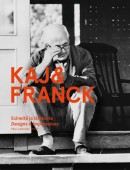 Kaj & Franck. Esineitä ja lähikuvia. / Designs & Impressions
Kaj & Franck. Esineitä ja lähikuvia. / Designs & Impressions
English translations: Peter Herring and Esa Lehtinen
Helsinki: WSOY, 2011. 166 p., ill.
ISBN 978-951-0-36898-5
€ 42, hardback
This dual-language book showcases the work of one of Finland’s most widely known glass and ceramic designers in his centenary year. The unaffected designs and clean geometric shapes of the tableware designed by Kaj Franck (1911–1989) are well suited to a wide range of cultures. Franck’s guiding principle was to create anonymous, self-evident objects for everyday use. In the 1940s and 1950s, Franck updated tableware to match post-war changes in society; he wanted to get away from the sets of crockery that filled up smaller kitchen cupboards. His designs that emphasised environmental principles and equality were ahead of their time with their ideology of sustainable development. This book portrays Franck’s life and career, which centred on the oldest glassworks in Finland in the community of Nuutajärvi, where he worked from the early 1950s until his death. Interviews with local residents and Franck’s colleagues create a portrait of him as a colourful personality. Ample illustrations provide a cross-section of Franck’s design output. In addition to his mass-produced items, there are photos of Franck’s one-off artistic creations.
Translated by Ruth Urbom
Ulla Jokisalo & Anna Kortelainen
Pins and needles
11 May 2011 | Essays, Non-fiction
In these pictures by Ulla Jokisalo and texts by Anna Kortelainen, truths and mysteries concerning play are entwined with pictures painted with threads and needles. Jokisalo’s exhibition, ‘Leikin varjo / Guises of play’, runs at the Museum of Photography, Helsinki, from 17 August to 25 September.
Words and images from the book Leikin varjo / Guises of play (Aboa Vetus & Ars Nova and Musta Taide, 2011)
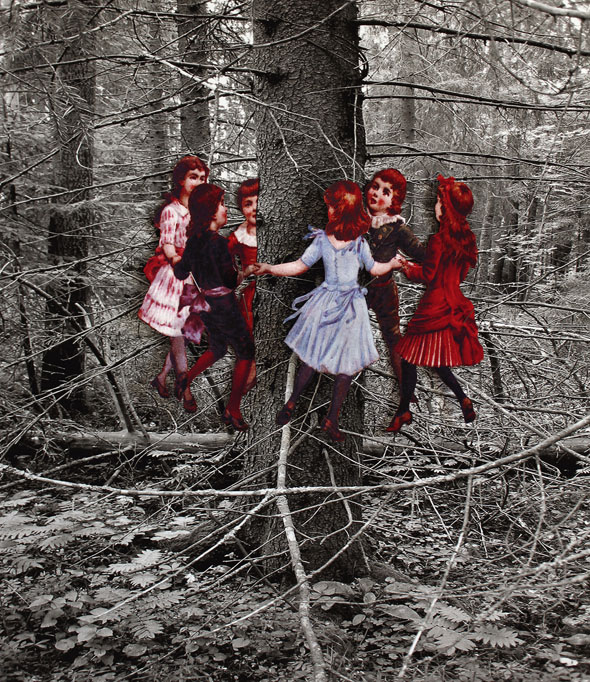
‘Ring dance’ by Ulla Jokisalo (pigment print and pins, 2009)
Self-made life
2 April 2011 | This 'n' that
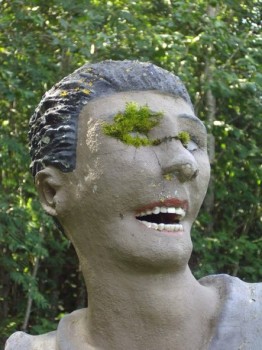
Art & nature: one of Veijo Rönkkönen's sculptures. Photo: Soila Lehtonen
You may perhaps remember an article entitled Self-made man, published on these pages in 2009: the sculptor Veijo Rönkkönen lived on a small, isolated farm in Parikkala, eastern Finland, where he spent his spare time building a garden of five hundred figures of concrete.
He lived in a cottage in the middle of his garden. Rönkkönen died a year ago, at the age of 66, and the future of his park, open and free to all, was unsolved for a while, as the Parikkala authorities were not willing to foot the bill for the upkeep the place – despite the fact that more than 25,000 people visit the park each year.
Now, the problem of the upkeep of the statue park, a ‘total work of art’, has been solved, as a businessman has bought the garden from Rönkkönen’s estate. and a number of institutions and individuals, among them friends of art and voluntary workers, have pledged keep the park open to visitors.
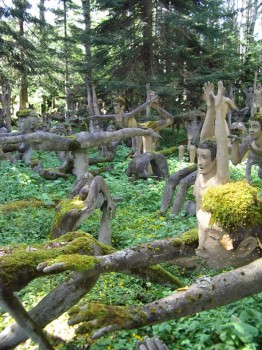
Yoga bare: Veijo Rönkkönen himself practised yoga. Photo: Soila Lehtonen
Photographer and writer Veli Granö introduced the life and works of this self-made artist in his book Veijo Rönkkösen todellinen elämä / The real life of Veijo Rönkkönen (Maahenki, 2007). Contemporary folk art goes by the acronym ITE, from the words itse tehty elämä, ‘self-made life’. The English-language term is ‘outsider art’.
The future of Rönkkönen’s cottage is undecided: it may become a park-keeper’s residence, or be used as an artist’s residence. Around it, the extraordinary legacy of this self-made artist – hundreds of statues, human and animal figures – will keep growing lichen and moss, ageing naturally.
Stories in the stone
2 December 2010 | Extracts, Non-fiction
Extracts from Jägarens leende. Resor in hällkonstens rymd (‘Smile of the hunter. Travels in the space of rock art’, Söderströms, 2010)
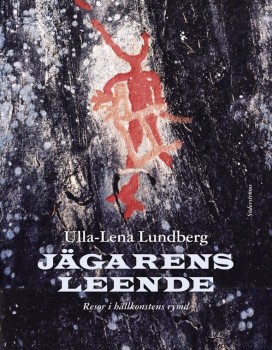 ‘Why do some people choose to expend what is often a great deal of effort hammering images in the bedrock itself, while others conjure up, in the blink of an eye, brilliantly radiant pictures on a rock-face that was empty yesterday but is now peopled by mythological animals, spirits and shamans?
‘Why do some people choose to expend what is often a great deal of effort hammering images in the bedrock itself, while others conjure up, in the blink of an eye, brilliantly radiant pictures on a rock-face that was empty yesterday but is now peopled by mythological animals, spirits and shamans?
‘I think about this often – I who love painting but who still chose a career that involves me sitting and hammering away, day in and day out, like a true rock-carver,’ writes author and ethnologist Ulla-Lena Lundberg in her new book on the art of the primeval man
When the children of Israel went into Babylonian captivity, hanging up their harps on the willow-trees and weeping as they remembered Zion, my sister and I were already sitting by the rivers of Babylon. We knew how they felt. Our father was dead and we had been sent away from our home. We sat there clinging to each other, or rather I was the one clinging to Gunilla, and she had to try to rouse herself and find something for us to do, to give us something else to think about. More…
Heartstone
2 December 2010 | Reviews
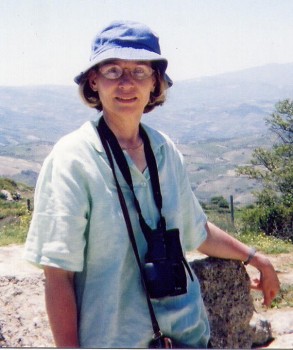
Ulla-Lena Lundberg
‘Knowledge enhances feeling’ is a motto that runs through the whole of Ulla-Lena Lundberg’s oeuvre – both her novels and her travel-writing, covering Åland, Siberia and Africa.
In her trilogy of maritime novels (Leo, Stora världen [‘The wide world’], Allt man kan önska sig [‘All you could wish for’], 1989–1995) she used the form of a family chronicle to depict the development of sea-faring on Åland over the course of a century or so. She gathered her material with historical and anthropological methodology and love of detail. The result was entirely a work of quality fiction, from the consciously old-fashioned rural realism of the first volume to the contradictory postmodern multiplicity of voices in the last – all of it in harmony with the times being depicted.
When Lundberg (born 1947) takes us underground or up onto cliff-faces in her new documentary book, Jägarens leende. Resor i hällkonstens rymd (‘Smile of the hunter. Travels in the space of rock art’), in order to consider cave- and rock-paintings in various parts of the world, she also reveals a little of the background to this attitude towards life that takes such delight in acquiring knowledge – an attitude that is familiar from many of the protagonists of her novels. More…
